Methods Capture
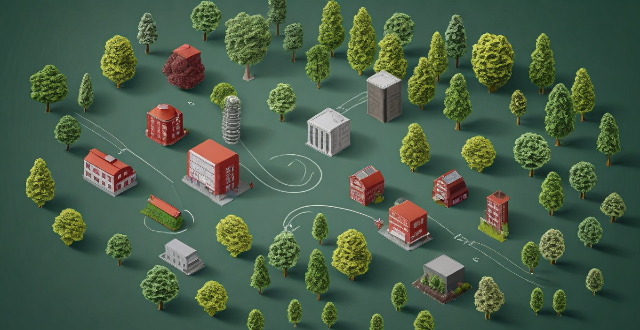
What is carbon capture technology and how does it work ?
Carbon capture technology is a set of methods aimed at reducing CO2 emissions from power plants, industrial processes, and other sources. The main types are post-combustion capture, oxy-fuel combustion, and pre-combustion capture, each with its specific techniques and challenges. While these technologies offer significant potential in the fight against climate change, they face economic and logistical barriers such as high costs and the need for safe storage solutions. Ongoing research seeks to improve efficiency and reduce costs, making carbon capture an increasingly viable solution in achieving net-zero emissions targets.

What is carbon capture and how does it work ?
Carbon capture, a technology to reduce CO2 emissions from industrial processes and power generation facilities, comprises three main types: post-combustion, oxy-fuel combustion, and pre-combustion. Each method captures CO2 differently, and the captured gas can be stored or used for other purposes. Carbon capture offers benefits such as reducing greenhouse gas emissions and supporting the transition to a low-carbon economy but faces challenges like high costs and energy requirements.
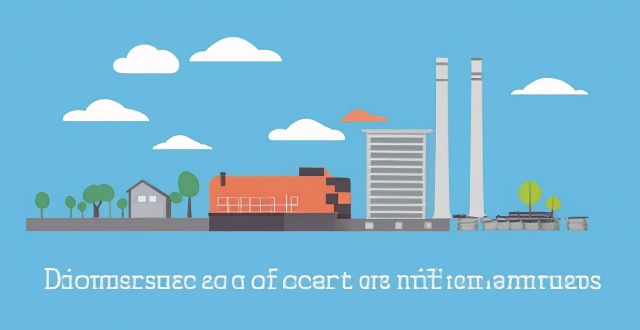
What is the significance of carbon capture and storage technologies ?
The text discusses the importance of carbon capture and storage (CCS) technologies in mitigating climate change, enabling clean energy transition, and supporting industrial processes. It highlights three main methods of capturing CO2: post-combustion capture, oxy-fuel combustion, and pre-combustion capture. The text also describes various ways to store CO2, such as geological storage, ocean storage, and enhanced oil recovery (EOR). Additionally, it mentions the potential for carbon utilization through sequestration, synthetic fuels production, and industrial applications. However, the text acknowledges challenges such as cost, energy penalty, public acceptance, and regulatory frameworks that need to be addressed for successful implementation of CCS projects.

Can carbon capture help us achieve our climate goals ?
Carbon capture and storage (CCS) has the potential to mitigate climate change by capturing CO2 emissions from power plants and industrial processes, preventing them from entering the atmosphere. The captured CO2 can be transported to a suitable location for long-term storage or used for enhanced oil recovery. However, CCS technology faces challenges such as high costs, energy losses, and public acceptance issues. While it is not a silver bullet, CCS could play a valuable role in reducing greenhouse gas emissions when integrated with renewable energy strategies and energy efficiency measures.
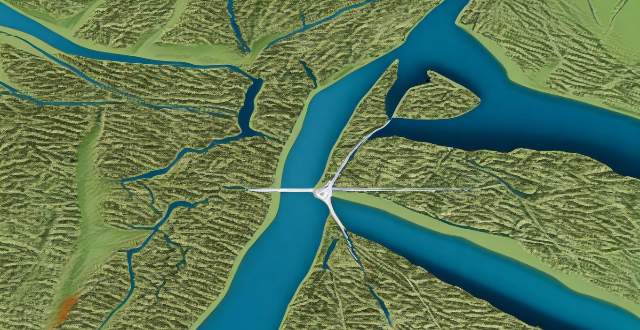
What are some examples of geoengineering techniques ?
Geoengineering techniques aim to counteract climate change through large-scale interventions in the Earth's climate system. These techniques include solar radiation management (SRM) methods like stratospheric aerosol injection and space sunshades, as well as carbon dioxide removal (CDR) strategies such as direct air capture (DAC), ocean fertilization, bioenergy with carbon capture and storage (BECCS), enhanced weathering, forestation and reforestation, and soil carbon sequestration. Other techniques involve albedo modification on Earth and atmospheric aerosol spraying. Despite their potential, these methods pose significant risks and uncertainties, necessitating further research before widespread use.

What are the most effective methods for improving industrial energy efficiency ?
The most effective methods for improving industrial energy efficiency include process optimization, using energy-efficient equipment, harnessing renewable energy sources, thermal management, power management, employee training and awareness, employing energy information systems, and complying with policy and regulatory standards. These methods can reduce operational costs, conserve resources, and minimize environmental impact.

How can we improve the efficiency of carbon capture and storage technologies ?
This text is about improving the efficiency of carbon capture and storage (CCS) technologies. The author suggests several strategies, including advances in capture technology, optimization of transport and storage processes, integration with renewable energy sources, innovations in material science, policy and economic incentives, and public awareness and education. The author believes that these measures can make CCS a more viable solution for combating climate change.

What are some examples of successful carbon capture projects ?
This text provides a topic summary of successful carbon capture projects, including the Boundary Dam Power Plant in Saskatchewan, Canada; Petra Nova Carbon Capture Project in Texas, USA; Quest Carbon Capture Project in Alberta, Canada; Schwarze Pumpe Power Plant in Brandenburg, Germany; and Lacq CCS Pilot Project in Aquitaine, France. Each project captures CO2 emissions from industrial processes and uses them for enhanced oil recovery or storage in depleted gas fields, reducing greenhouse gas emissions by up to 90%.
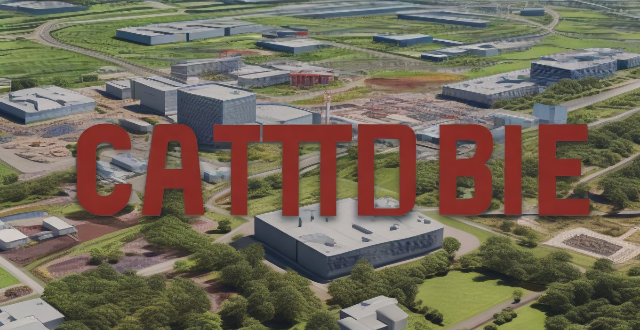
How can we improve carbon capture technology to make it more efficient and cost-effective ?
Carbon capture technology is a crucial tool in the fight against climate change. However, the current state of this technology is not yet efficient or cost-effective enough to be widely adopted. To improve carbon capture technology, we need to enhance efficiency and reduce costs through advancements in material science, optimization of processes, integration with other technologies, direct air capture, economies of scale, government incentives, private investment, improved maintenance and operation, and continuous research and development. With these efforts, we can make carbon capture technology accessible and practical for widespread use in the fight against climate change.
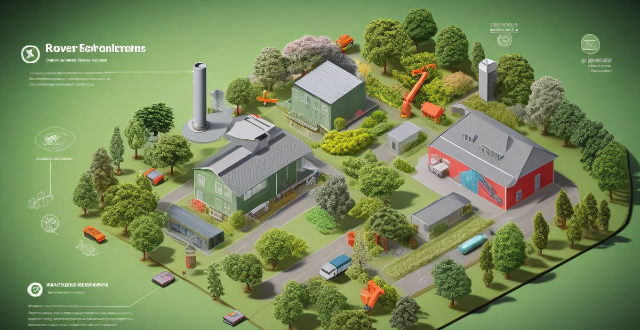
What are the potential benefits of carbon capture technology for the environment ?
Carbon capture technology can help reduce greenhouse gas emissions, improve air quality, encourage economic growth, and enhance ecosystem health. It has the potential to mitigate climate change, meet emission reduction targets, enhance energy security, reduce pollutants, protect human health, create jobs, stimulate innovation, promote clean energy, protect biodiversity, preserve natural resources, and restore degraded landscapes. Investing in carbon capture technology may prove to be crucial for creating a more sustainable future.

How does a carbon tax compare to other methods of reducing carbon emissions ?
The article discusses the comparison of a carbon tax to other methods of reducing carbon emissions. It explains what a carbon tax is and lists other methods such as renewable energy sources, energy efficiency, carbon capture and storage, and forest management. The article then compares these methods in terms of cost-effectiveness, implementation speed, public acceptance, and environmental impact. It concludes that while a carbon tax is effective, it should be part of a broader strategy including investments in renewable energy, energy efficiency measures, CCS technology, and forest management for the best results in combating climate change.

Can carbon capture technology be used in conjunction with other renewable energy sources ?
Carbon capture technology can be used with renewable energy sources to reduce greenhouse gas emissions and mitigate climate change. There are several ways that this technology can be used, including post-combustion capture, pre-combustion capture, oxy-fuel combustion, and chemical looping combustion. However, there are also challenges and considerations that must be taken into account, such as cost, energy requirements, and storage.
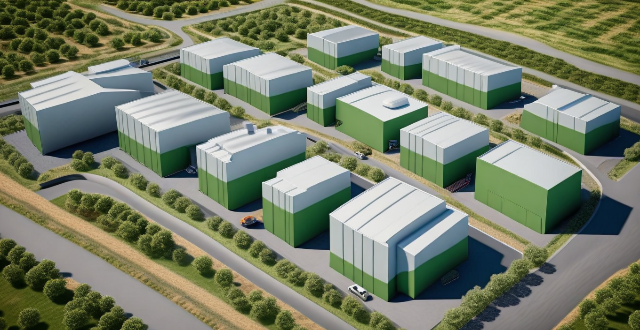
What are the challenges associated with implementing carbon capture on a large scale ?
Carbon capture and storage (CCS) is a technology that aims to reduce greenhouse gas emissions by capturing carbon dioxide (CO2) from industrial processes and storing it underground. Implementing CCS on a large scale poses several challenges, including high costs, technology maturity, storage capacity, regulatory and legal barriers, public perception, and energy requirements. Overcoming these challenges is essential for the successful implementation of CCS on a large scale. Collaboration among governments, industry, and researchers will be necessary to develop more efficient and cost-effective carbon capture technologies, establish clear regulations and liability frameworks, and raise public awareness about the benefits of CCS.

How do sports photographers capture the beauty and emotion of athletic events ?
**How Sports Photographers Capture the Beauty and Emotion of Athletic Events** 1. **Understanding the Sport**: Research and anticipation help photographers capture key moments. 2. **Equipment Choices**: Appropriate lenses, high-speed cameras, and stabilizing devices are essential. 3. **Positioning**: Unique angles, perspectives, and clean backgrounds enhance photos. 4. **Timing and Composition**: Precise timing and thoughtful composition are crucial. 5. **Lighting**: Natural and artificial lighting affect photo quality. 6. **Emotion and Storytelling**: Capturing emotions and telling stories through images is impactful. 7. **Post-Processing**: Editing and selecting the best shots is part of the process. 8. **Ethics and Professionalism**: Respect and professionalism guide sports photographers in their work.

Is carbon capture technology a viable solution for industries with high carbon emissions ?
Carbon capture technology (CCT) is a process that captures carbon dioxide (CO2) emissions from burning fossil fuels and stores it to prevent its release into the atmosphere. This technology has been proposed as a solution to reduce greenhouse gas emissions from industries with high carbon footprints. However, there are both advantages and challenges associated with CCT. The primary advantage of CCT is its potential to significantly reduce greenhouse gas emissions from power plants and other industrial processes by capturing up to 90% of CO2 emissions. It also allows the continued use of fossil fuels while reducing their environmental impact, which is particularly important for countries heavily reliant on coal or natural gas for their energy needs. Additionally, the development and implementation of CCT could create new job opportunities in research, engineering, construction, and operation of these facilities. However, one of the biggest challenges facing CCT is its high cost. The installation and operation of carbon capture systems can be expensive, making it difficult for many companies to invest in this technology. Carbon capture processes also require energy, often from burning more fossil fuels, which can lead to a net increase in CO2 emissions unless the energy source is renewable. Once captured, CO2 needs to be transported and stored safely, requiring infrastructure that does not currently exist in many regions and raising concerns about leakage and long-term storage solutions. In conclusion, while carbon capture technology offers promising benefits for reducing greenhouse gas emissions from industries with high carbon footprints, it also presents significant challenges that need to be addressed before it becomes a widely adopted solution. Cost-effectiveness, energy requirements, and storage infrastructure are key areas that require further development and investment to make CCT a viable option for combating climate change.

What are some innovative teaching methods that can enhance student engagement ?
Innovative teaching methods, including Project-BasedInnovative teaching methods, including Project-Basedroom, Gaming and Simulation Gaming and Simulations, Peer Teaching and Tutoring, Technology Integration, and Service Learning, are designed to enhance student engagement by fostering critical thinking, problem-solving, collaboration, and real-world application of knowledge. These approaches aim to make learning more interactive, relevant, and enjoyable for students, ultimately contributing to their academic success and personal growth.

What methods can I use to simplify complicated equations ?
Simplify complex equations using techniques like factoring, combining like terms, applying the distributive property, elimination, substitution, graphical methods, completing the square, rationalization, using trigonometric identities, logarithmic properties, exponential rules, the Pythagorean identity, derivatives/integrals, matrix methods, and numerical approximation.

How can carbon capture technology be scaled up to address global climate change ?
The article discusses the challenges and strategies associated with scaling up carbon capture technology (CCT) to mitigate global climate change. The challenges include high costs, technological limitations, infrastructure and logistics issues, and regulatory and legal frameworks. To overcome these challenges, strategies such as policy and economic incentives, technological innovation, infrastructure development, public-private partnerships, and international cooperation are proposed. Scaling up CCT is crucial in reducing atmospheric CO2 levels and combating global climate change.

How can I improve my memory using science-based methods ?
Improving memory can be achieved through various science-based strategies, including repetition, visualization, storytelling, mnemonic devices, chunking, maintaining a healthy lifestyle, practicing mindfulness and meditation, engaging in active learning, considering environmental context, and staying mentally active. These methods help move information from short-term to long-term memory, making it easier to recall later. Consistency and patience are crucial for enhancing cognitive functions.

How can augmented reality transform traditional teaching methods ?
Augmented Reality (AR) can revolutionize traditional teaching methods by providing an interactive and immersive learning experience. It can make learning more engaging, provide personalized feedback and guidance, facilitate group projects and remote collaboration, and provide contextual learning and virtual field trips. Incorporating AR into the classroom can create a more engaging and effective learning environment for students.

Is carbon capture a viable solution for all industries and sectors ?
Carbon capture technology, while offering significant potential to reduce industrial carbon emissions, faces challenges in universal adoption due to high costs and energy penalties. Its applicability varies across sectors like power generation, manufacturing, and transportation. Economic considerations include hefty investments and potential job creation, while environmental benefits encompass direct emission reduction and support for a circular economy. The viability of carbon capture depends on industry-specific factors, economic conditions, and technological progress.

How can teachers effectively integrate multimedia resources into their innovative teaching methods ?
Integrating multimedia resources into teaching methods can greatly enhance the learning experience for students. Teachers should identify learning objectives, choose appropriate tools, create interactive lessons, encourage student participation, integrate technology in assessments, provide access to online resources, and continuously evaluate and update their methods. This approach ensures that teaching remains innovative and engaging for students.

How to manage payment methods for my Apple account ?
Apple offers multiple payment methods for users, including creditApple offers multiple payment methods for users, including credit Apple Pay, and gift cardsManaging your payment methods ensures a smooth experience when making purchases on Apple services like the App Store and iTunes Store.

What are some of the most effective methods for carbon sequestration ?
Carbon sequestration refers to the process of capturing and storing carbon dioxide (CO2) from the atmosphere to mitigate its effects on climate change. There are several effective methods for carbon sequestration, including afforestation and reforestation, soil carbon sequestration, biochar production, ocean fertilization, and direct air capture (DAC). Afforestation and reforestation involve planting new trees or replacing existing ones in deforested areas, while soil carbon sequestration involves increasing the amount of organic matter in soil by adding compost, manure, or other organic materials. Biochar production involves creating a type of charcoal made from plant materials that is added to soil to improve its fertility and water-holding capacity. Ocean fertilization involves adding iron or other nutrients to the ocean to stimulate the growth of phytoplankton, which absorb CO2 through photosynthesis. Direct air capture involves using machines to capture CO2 directly from the atmosphere and then store it underground or in other long-term storage solutions.

What are the most effective methods for analyzing climate data ?
Analyzing climate data is a complex task that requires a deep understanding of the subject matter and the use of advanced statistical techniques. Some of the most effective methods for analyzing climate data include time series analysis, regression analysis, spatial analysis, principal component analysis (PCA), and machine learning algorithms. These methods help researchers to identify patterns, trends, and cycles in climate data, determine relationships between variables, analyze data with a geographical component, reduce the dimensionality of large datasets, and identify patterns and trends not apparent through traditional statistical techniques. By using these methods, researchers can gain insights into our changing planet and predict future climate conditions based on current trends.

How do ecosystem-based adaptation methods contribute to climate resilience ?
Ecosystem-based adaptation (EBA) methods play a crucial role in building climate resilience by leveraging the natural capacity of ecosystems to mitigate and adapt to the impacts of climate change. These approaches focus on conserving, restoring, and promoting sustainable management of ecosystems to provide essential services that help communities cope with climate-related stresses. Below are several ways EBA methods contribute to enhancing climate resilience: Protection from extreme events, enhancement of biodiversity, promotion of sustainable livelihoods, regulation of water resources, carbon sequestration and storage, community empowerment and education, disaster risk reduction, and research and innovation.

Can you discuss the impact of personalized learning on innovative teaching methods ?
Personalized learning, an educational approach that tailors instruction to individual students' needs and preferences, has significantly influenced innovative teaching methods. This approach emphasizes a student-centered learning environment, flexible use of technology and space, and data-driven decision making. As a result, teaching methods have evolved to include differentiated instruction, mastery-based assessments, self-directed learning opportunities, and the integration of technology. These changes aim to create a more engaging, effective, and personalized educational experience for each student, fostering deeper understanding and higher retention rates.

Can you discuss the environmental impact of various energy storage methods ?
The text discusses the environmental impact of various energy storage methods, including batteries, pumped hydro storage, compressed air energy storage (CAES), and flywheels. It points out that while these methods allow for the efficient use of renewable energy sources and help to balance supply and demand, they also have varying levels of environmental impact. For example, battery production can result in water pollution and deforestation due to raw material extraction, while pumped hydro storage can affect local ecosystems and communities through land use and water usage. CAES may face challenges such as geological requirements and efficiency issues, and flywheels are considered an environmentally friendly option with a low environmental footprint. The text concludes that it is essential to consider both the efficiency and environmental implications of different energy storage solutions to ensure a sustainable future for our planet.

What are some innovative technologies being developed to address climate change ?
The article provides a summary of innovative technologies being developed to address climate change. These include renewable energy sources such as solar, wind, hydroelectric, and geothermal power; carbon capture and storage (CCS) methods like post-combustion capture, oxy-fuel combustion, and pre-combustion capture; electric vehicles (EVs); smart grid technology; nuclear fusion; afforestation and reforestation; and green building design. These technologies aim to reduce greenhouse gas emissions, increase energy efficiency, and promote sustainable practices in order to combat climate change and transition towards a more sustainable future.

What are some innovative methods for teaching climate change in schools ?
Innovative Methods for Teaching Climate Change in Schools Climate change is a pressing issue that requires innovative approaches to teaching. Here are some methods that can help engage students and promote critical thinking: 1. Interdisciplinary Learning 2. Project-Based Learning (PBL) 3. Service Learning 4. Technology Integration 5. Inquiry-Based Learning 6. Field Trips and Experiential Learning